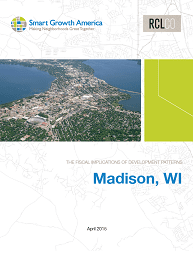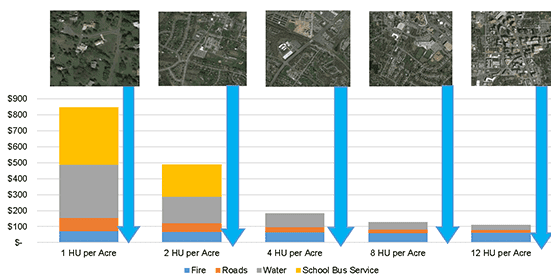RCLCO and Smart Growth America Unveil New Model for Analyzing Fiscal Performance of Urban Development

Every town, city, and county makes decisions about how and where to grow and what kind of development to allow. These decisions extend beyond just land use to include questions of location, design, and connectivity. Every jurisdiction considering new development should understand the financial implications of these options. Every property owner should understand how their development proposal can offer a win for both public and private sector bottom lines.
How much will it cost to support new development in coming years? Would different development scenarios bring more net revenue? Does a compact development near transit provide a different impact from one with the same number of jobs and employees in a low-density format? These are potentially multi-million dollar questions that are important for jurisdictions to consider.
RCLCO and Smart Growth America, a national non-profit, have created a new model designed to help jurisdictions evaluate the financial performance of development patterns and what strategies could generate better returns in the future. Property owners and developers can also use this model to demonstrate the fiscal impact of their development proposals.
Fiscal models are often based on an “average cost” assumption. That is, they assume each new resident and/or employee associated with new development generates an increase in public operating costs equal to the average cost per resident and/or employee—regardless of the pattern or location of the new development.
 The main innovation in this new model is that we identify specific governmental functions as sensitive to geographic dispersion, and we allow the cost per capita for these categories to vary based on the density of the development scenario for each new resident and employee associated with a given scenario. Read more about the model methodology here.
The main innovation in this new model is that we identify specific governmental functions as sensitive to geographic dispersion, and we allow the cost per capita for these categories to vary based on the density of the development scenario for each new resident and employee associated with a given scenario. Read more about the model methodology here.
Madison, Wisconsin, is the first city to use our new model to analyze potential development options in the city’s Pioneer District, a 1,400 acre area that is largely vacant right now. Follow this link to see the results in Madison and this link to watch a recorded webcast about the model, which begins at the 5:40 mark.
Analysis is underway in additional jurisdictions, including: West Des Moines, Iowa; Dona Ana County, New Mexico; Nashville, Tennessee; Macon, Georgia; and Indianapolis, Indiana.
Disclaimer: Reasonable efforts have been made to ensure that the data contained in this Advisory reflect accurate and timely information, and the data is believed to be reliable and comprehensive. The Advisory is based on estimates, assumptions, and other information developed by RCLCO from its independent research effort and general knowledge of the industry. This Advisory contains opinions that represent our view of reasonable expectations at this particular time, but our opinions are not offered as predictions or assurances that particular events will occur.
Related Articles
Speak to One of Our Real Estate Advisors Today
We take a strategic, data-driven approach to solving your real estate problems.
Contact Us







